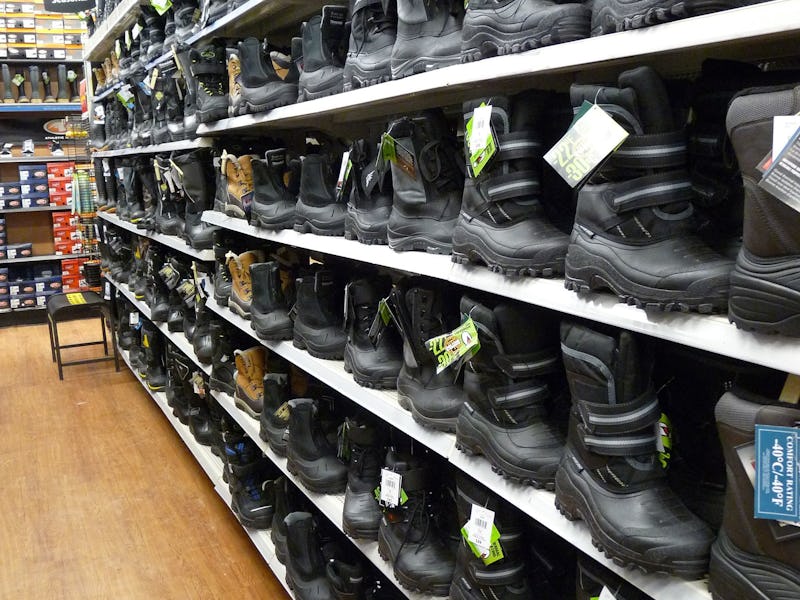Canadian researchers put dozens of boots to the test to see how they would fare in icy winter conditions, and the results were not good. Out of 98 pairs tested, 89 failed completely. The remaining nine received a measly rating of one snowflake out of a possible three.
Ouch.
The boots were tested in the aptly named WinterLab, “an underground, state-of-the-art research facility,” at the Toronto Rehabilitation Institute-University Health Network, according to a news release. WinterLab is essentially a room with the power to simulate the worst weather a Canadian winter can throw at it — the cold, the wind, and of course the icy walkways.
For the research, each boot was tested under two ice conditions — solid ice and melting ice. A tester, wearing a proper winter parka and safety harness, put on the boots and walked back and forth across the room. If that went well, the angle of the floor was tilted up, and the tester would walk both uphill and downhill across the surface. The angle of the surface was increased until the boots began to slip.
A one-snowflake rating requires that the boots worked well going both uphill and downhill on solid and melting ice at angles of at least seven degrees from horizontal. This minimum standard was determined by the maximum angle allowed for accessibility ramps in Toronto. Eleven degrees earns a second snowflake, and 14 earns a third. But none of the boots got that far.
More than 90 percent of boots tested failed to meet the one-snowflake minimum standard.
Brands with at least one boot making the standard were Caterpillar, Dakota, Sperry, WindRiver, and Wolverine. Other popular brands, including Baffin, Blundstone, Columbia, Kamik, Sorel, and UGG, failed to make the cut. Full results are available at www.ratemytreads.com.
The research was about more than making fashionable boot brands look bad. The Province of Ontario, with a population of about 14 million, sees 20,000 emergency room visits from winter slips and falls each year, according to the release. And better boots could encourage people to go out and brave the elements rather than holing up inside, which would lead to improved public health outcomes as well.
“I expect that many serious and life-changing injuries will be prevented this winter by people choosing to buy better non-slip footwear,” says Geoff Fernie, research director with the Toronto Rehabilitation Institute, in the release. “I also expect the impact to grow with future winters as more manufacturers strive to develop products that score well in our system and can be recommended to consumers.”
It’s worth noting, though, that replacing your high-fashion boots isn’t the only choice for braving an ice storm. There are options out there for traction enhancers that you can slip over any boot when conditions call for it, so you only have to sacrifice style for safety on days when it’s particularly ugly out.
